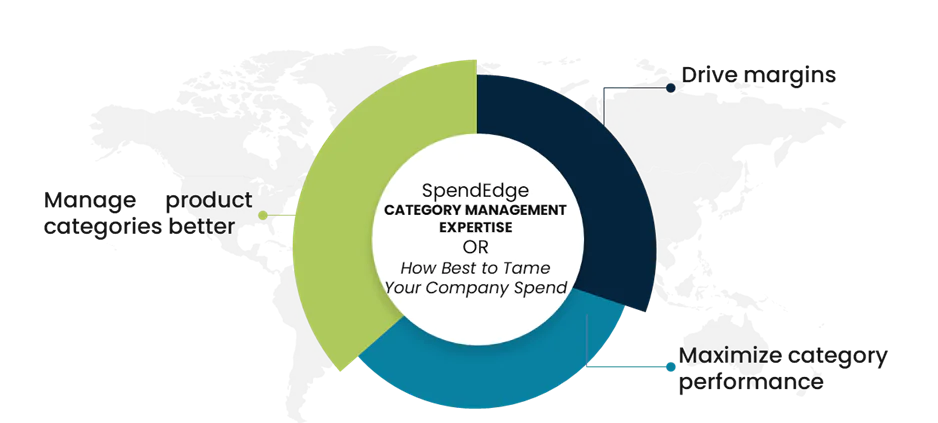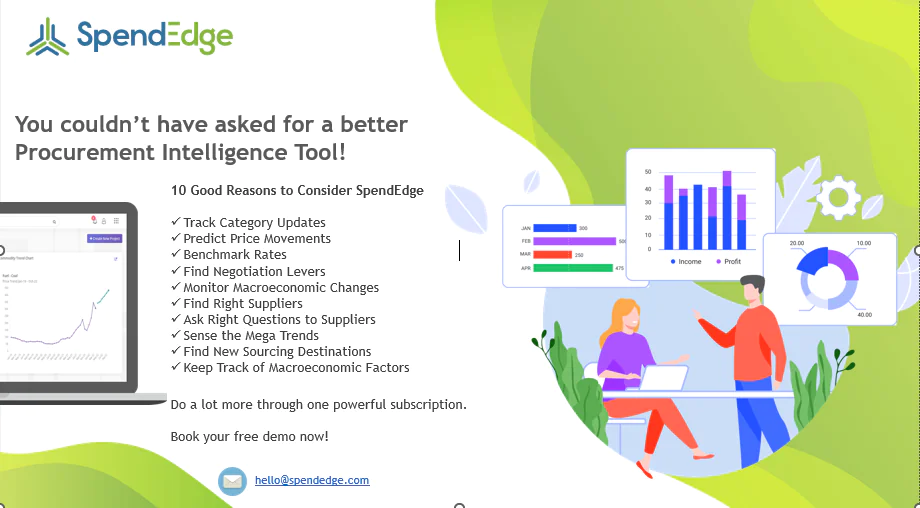Author: Christoph Zacharias
There is a need to invigorate procurement. Category management can do it!
Effective category managers almost always start by understanding the underlying motivations, expectations, likes, dislikes, and inclinations that drive customers toward a certain product. They also typically look for customer niches not currently served by existing offerings, hoping to use them advantageously. To plumb the depths of customer preferences, category management professionals lavishly make use of market intelligence, sales metrics, and online customer insights. These are typically aggregated using various feedback software as well as via surveys and live chats. Social media platforms represent the other key source of customer insights. Category managers then proceed to decide the breadth, length, depth, and consistency of their product lines, keeping the needs and preferences of customers as the baseline.
How well a certain product meets customer expectations, and its consistency and durability over time are also key considerations here. Data analysis is the central piece in this jigsaw, and category management procurement strategy is increasingly leaning on this science to gain more in-depth, clearer, and more accurate metrics on supplier landscape. Category management is and should be a continuous phenomenon, and one would naturally expect its practitioners to drive meaningful changes to their procurement strategies in line with evolving need for cost savings and improved innovation. Securing favorable pricing and terms from suppliers is crucial to success in category management procurement strategy. Fostering better relationships with suppliers is pivotal for category management professionals not just in the interest of optimizing costs but also to rein in associated risks.
Category management can work wonders for your business
The importance of effective category management in boosting profitability and improving margins even in difficult markets can never be overstated. Overall, category management procurement strategy can bring a host of benefits to your procurement organization, and here’s a list of three noticeable ones.
Increased customer satisfaction
Category managers who succeed in bringing their savings and supplier performance into line with procurement targets are more likely to win the battle for achieving best-in-class status. To avoid overstocking and its other extreme, namely stockouts, businesses can’t do without an effective category management procurement strategy. Building ever stronger bonds with the supply base is key to ensuring timely availability of high-quality inventory in the right measure. So, it’s important for category managers to work hand in hand with procurement personnel to make sure category plans for a specific product inform its procurement plans, which, in turn, shape the supplier assessment and relationship management efforts around the category.
Improved supplier collaboration
Your category management procurement strategy, in order to be effective, must follow a highly organized approach to prioritizing various product categories as well as suppliers associated with them. Supply-side participants are grouped based on how critical they are to specific categories of supplies and the level of risk they pose to supply networks. Priority suppliers are singled out for closer collaboration and long-term relationships.
Strategic cost savings
Picking up from where we left off, by intelligently segmenting vendors and then neatly consolidating them within categories, businesses can engage in bulk purchasing from fewer suppliers. The result is lower per unit prices and reduced shipping charges. Apart from consolidating spend categories, an optimal category management procurement strategy will certainly help straighten out workflows and centralize data management. In addition, this will help mercilessly axe repetitive tasks to drive efficiencies and ensure appreciable cost reduction. That would include transition costs, security costs, and lots more.
How SpendEdge can help you
This section will highlight solutions or how procurement helps and majorly highlight how SpendEdge plays the major role.
At SpendEdge, our experts in category management procurement strategy enable businesses – large, medium, small, MNCs, and homegrown ones to make better purchase decisions based on irrefutable metrics. With our advisory and recommendations, as well as stellar category intelligence, C-suiters stay updated on the latest market shifts and consumer behavioral changes. Our experts are committed to tracking a range of supply-side developments on a continuous basis and these include supplier capabilities, supply disruptions, regulatory swings, and other market trends that could potentially impact delivery networks. Our experts have 20+ years of direct experience in building highly efficient sourcing networks that are faster and simpler than competing ones. So, we have the majority of bases in sourcing covered. Our expertise extends to expanding supply channels, supplier onboarding, contract negotiation, spend analytics, and cost management.
Our trusted team of advisors collaborates closely with clients’ procurement organizations to pin down potential risks and assess their impact. We are sure forward-thinking businesses, such as yours, might also want to proactively identify and eliminate instances of money spent to no purpose! Our category monitors are purpose-built to serve this objective. With our experts around, the chances of things going wrong are almost nil. Our specialists in category management procurement strategy also direct their efforts to keep supply eventualities down to the barest minimum possible. Most importantly, we bring the latest tools into play. D-Risk, a homegrown SpendEdge innovation, has already proved its mettle as a priceless tool for CPOs keen on sizing up business uncertainties and rolling out proactive measures to rein them in. Our procurement practitioners help enterprises weigh up and alleviate potential supplier risks. This involves factoring in as many of the internal and external supply-side developments (e.g., geopolitical tensions, cost escalations, reputational hazards) as possible.
A pharma enterprise builds a procurement strategy that wraps around category intelligence
Our client is a global pharmaceutical company with a diverse portfolio of prescription medicines and over-the-counter therapeutics. In its short decade-long existence, the company has built up a strong intellectual property (IP) portfolio and scaled out therapeutics across various modalities (e.g., cell and gene therapy, small molecule, nucleic acid drugs). With a view to pushing the frontiers of therapeutic research, our client runs wide-ranging alliances with public sector and commercial organizations. The client has an impressive track record of successfully applying theoretical knowledge to drive commercial production of new drug formulations at scale and speed. This is bringing much-needed therapeutic relief to patients with high unmet needs.

The pharma enterprise boasts end-to-end manufacturing processes capable of seamlessly transforming input materials into finished pills without pauses. The $5 billion company has a commercial footprint in as many as 30 countries by way of direct presence as well as wholesale distributors. The client operates against the backdrop of ever-evolving legislations and a regulatory framework that lays emphasis on product safety, efficacy, and quality. The client’s procurement strategy and category management teams work with an expansive network of suppliers, covering raw materials, active pharmaceutical ingredients (APIs), and packaging materials. For the most part, the client counts on this extended vendor network to ensure the suitability of end products for their intended use as well as promote compliance with tightening regulatory norms.
The industry, by its very nature, tends to be affected by potential supply-side risks, and past performance by supply chain participants is no guarantee of future outcomes. Supply chain breakdowns can take pharma businesses unawares in this age of simmering geopolitical tensions. A lapse on the part of a single supplier is enough to sap the strength of the entire supply line. At the same time, the penalties for compliance-related violations are stinging. For context, fines in this category have crossed $50 billion in the last two decades in the US alone! So, the long and short is that the client started looking out for a more effective category management and supplier risk management strategy. In mid-2022, the pharma business had a kickoff call with our procurement strategy teams.
As they say, one thing led to another, and our category managementspecialists framed a rigorous supplier selection process to enable the client to vet potential suppliers more accurately. Fiscal stability, skill sets, as well as compliance and quality management practices were the key parameters in this exercise. Managing customer experience and expectations was the other yardstick. Our experts also organized potential risks clinically into buckets based on severity levels. This apart, our study plumbed the depth of the client’s relationship with tier-1 suppliers and examined the extent of collaboration with the supplier base. Furthermore, our team helped the client deploy a monitoring system to track supplier performance, financial health, and regulatory compliance – all in real-time.
To future-proof the supply lines for critical materials, our team recommended diversification of the client’s supplier base and routes. Additionally, our experts in procurement strategy put in place redundancy measures such that the client’s supply lines transition in quick time to alternative sources to abate supply disruptions and associated risks.
Our supply chain management solution is paying off for the client in terms of reduced exposure to risks, compliance improvement, and better supply-side agility. Other benefits like reduced costs and strengthened partnerships have also accrued to the client.





